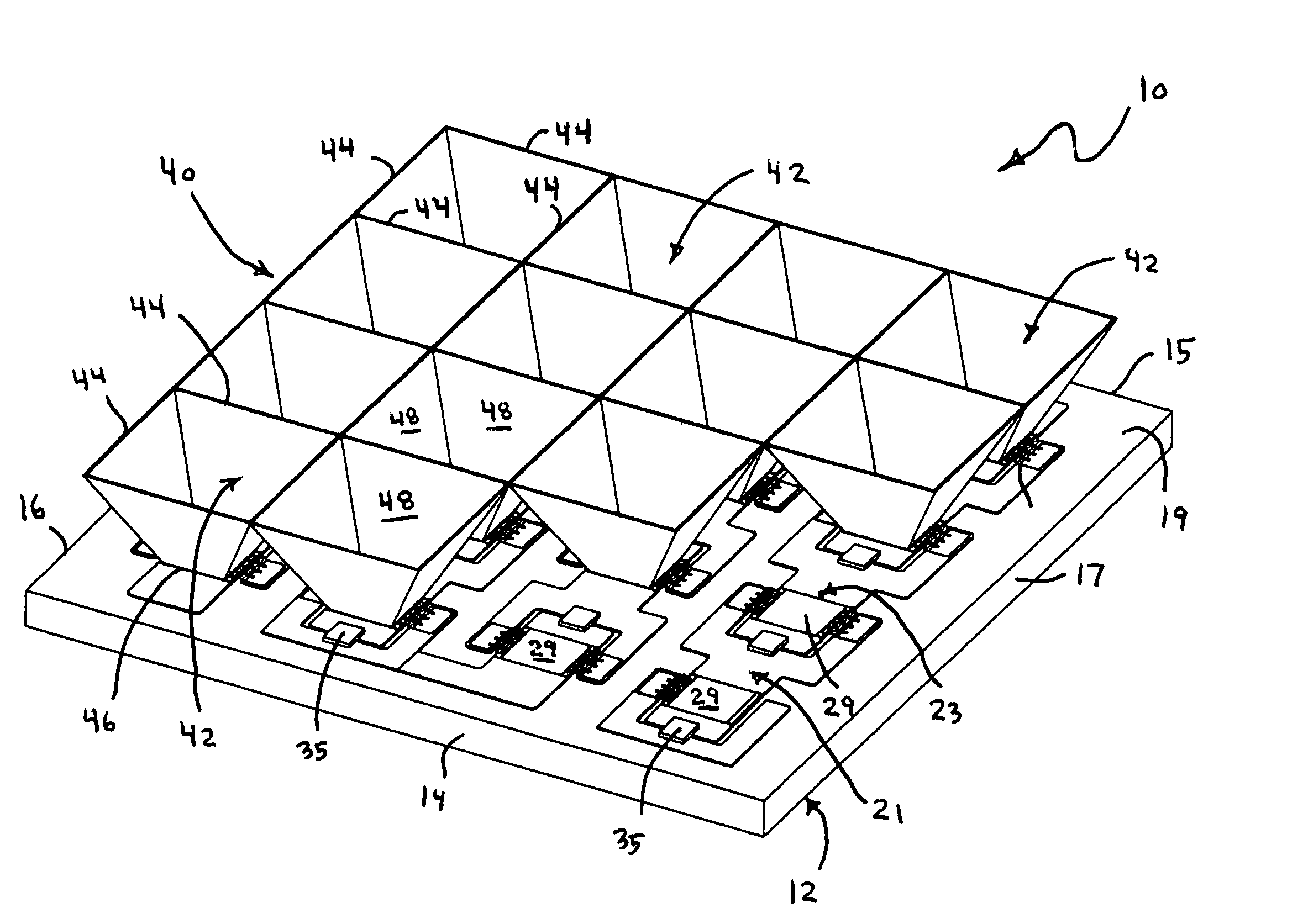Method of improving the efficiency of loosely packed solar cells in dense array applications
- Summary
- Abstract
- Description
- Claims
- Application Information
AI Technical Summary
Benefits of technology
Problems solved by technology
Method used
Image
Examples
Embodiment Construction
[0012]The increased efficiency Concentrator Photovoltaic (PV) System will now be described by referring to FIGS. 1 and 2 of the drawings. The PV System is generally designated numeral 10. It has a substrate 12 having a front end 14, a rear end 15, a left end 16, a right end 17 and a top surface 19. Substrate 12 may be made of a non-electrical conducting material or a conducting material such as metal in which the top surface has been rendered non-conductive by application of a surface treatment or coating on the non-conductive material.
[0013]A plurality of metal traces 21 are located on top surface 19 and they provide a surface upon which the solar cells 23 can be supported and also provide a path for the electrical output of the individual solar cells 23. The solar cells 23 have a front edge 24, a rear edge 25, a left edge 26, a right edge 27 and a top surface 29. Top surface 29 is the active area that receives the solar rays that produce electricity. Metal ribbons / wires 32 provide...
PUM
 Login to View More
Login to View More Abstract
Description
Claims
Application Information
 Login to View More
Login to View More - R&D
- Intellectual Property
- Life Sciences
- Materials
- Tech Scout
- Unparalleled Data Quality
- Higher Quality Content
- 60% Fewer Hallucinations
Browse by: Latest US Patents, China's latest patents, Technical Efficacy Thesaurus, Application Domain, Technology Topic, Popular Technical Reports.
© 2025 PatSnap. All rights reserved.Legal|Privacy policy|Modern Slavery Act Transparency Statement|Sitemap|About US| Contact US: help@patsnap.com



